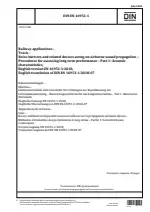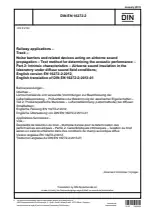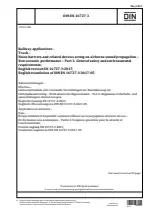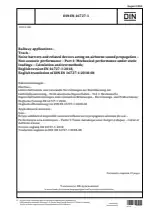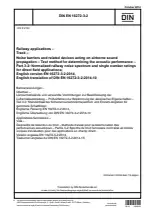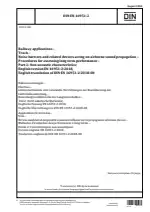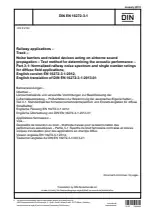Railway Applications - Track - Noise Barriers and Related Devices Acting on Airborne Sound Propagation - Procedures for Assessing Long Term Performance - Part 1: Acoustic Characteristics
Also Known As:
DIN EN 16951-1 is a standard that focuses on the assessment of the long-term performance of noise barriers and related devices used in railway applications. The standard sets out requirements for evaluating the working life of these barriers and provides guidelines for determining the relevant exposure conditions.
The purpose of DIN EN 16951-1 is to ensure that noise barriers and related devices are effective and reliable in reducing airborne sound propagation in railway environments over an extended period of time. By establishing a standardized assessment procedure, the standard allows for consistent evaluation and comparison of the acoustic characteristics of different barriers.
The standard takes into account various factors that can influence the long-term performance of noise barriers, such as environmental conditions, exposure to weather conditions, and aging processes. It specifies the test methods, measurement techniques, and acceptance criteria to be used in assessing the acoustic characteristics of barriers.
| Descriptors | Acoustic properties and phenomena, Acoustic testing, Acoustics, Airborne noise emitted, Airborne sound insulation, Definitions, Diffuse fields, Environmental condition, Evaluations, Infrastructure, Laboratory testing, Life (durability), Long-time behaviour, Materials testing, Measurement, Noise, Noise control (acoustic), Noise (environmental), Noise reduction, Product specification, Protective walls, Rail transport, Railway applications, Railways, Sheeting, Sound fields, Sound insulation measure, Sound propagation, Stress, Superstructure, Testing, Travel ways, Architraves, Sheets, Pavements (roads), Casing, Cages (machines), Permanent ways, Roadways, Mouldings |
| ICS Codes | 93.100 - Construction of railways |
| Language(s) | English |
| File Size | 972.8 KB |

